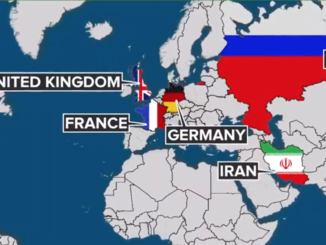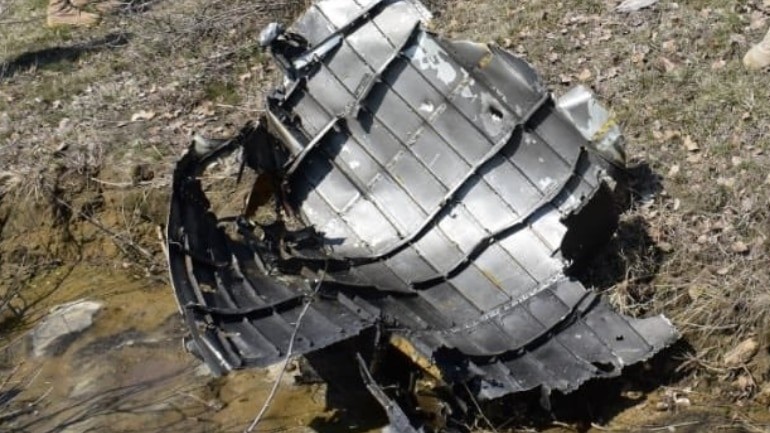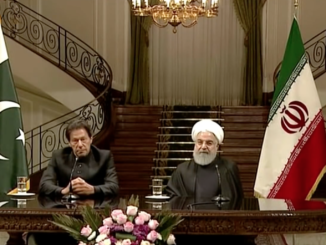
The size of the Indian Armed Forces has always been bigger in comparison to Pakistan. However, Pakistan successfully maintained the conventional balance in early years due to better training and technically advanced equipment. India’s buying spree and relentless expansion resulted into an asymmetry in conventional forces. The nuclear tests afforded Pakistan to maintain a strategic balance in the region through its missiles and nuclear programme. However, off late Indian initiatives are moving in a direction that challenge the strategic balance in the region. With Indian economy promising better dividends to the world and a hyper active foreign policy affords India a dominant role in regional and global interplay. Pakistan needs a whole of the nation approach in current milieu to maintain credible deterrence and stability in the context of strategic balance between India and Pakistan.
Indian Initiatives to Gain Strategic Superiority
Acquisition of Rafael Jets. Indian Acquisition of Rafael Fighter Jets is a big step in this direction. The first of 36 Rafael fighter jets which have been received by the IAF on 9 Oct 2019 are armed with the SCALP gr attack missiles having a range well over 300 kms. These aircrafts are described as fully versatile having the capability of carry out all combat aviation missions to achieve air superiority and air defence, Close Air Support, in-depth strikes, recce, anti-ship strikes and nuclear deterrence.
Acquisition of S-400 Missile Defence Sya=stem. On the plea of a possible two-front conflict and depleted condition of Indian Air Force’s aircrafts, S-400 missile defence system is likely to find its way on the inventory of Indian military. This capability, if achieved by India will seriously hamper execution of mission by Pakistan Airforce as the 600 km range provided by this system provides good access to the system after taking off from Forward Operating Bases. Moreover, the system is also capable of intercepting cruise as well as ballistic missiles, which will pose implications on Ghaznavi, Ghauri, Shaheen, Babur as well as Nasr missiles of Pakistan.
Spike – Anti Tank Missile. Successful test fire of 4th generation Fire and Forget missile named Spike is an anti-tank missile capable of operating with precision at a range of four kms. The capability of fire, observe and update supplemented with the mid-course correction and ability of firing from a high and low trajectory makes it 90% reliable. With the acquisition of this weapon system, India achieves the capability to engage the armoured formations from a stand-off and hence gains advantage in operation and tactical domains.
Dhanush Artillery Gun. Indian initiative of Make in India “Dhanush” (45 calibre towed artillery gun system), having the capability to target on longer ranges incorporating autonomous laying features complimented with sophisticated suites of electronic and computer systems hass provided an edge to Indian military to strike the pin-pt tgts.
Advancement in AI and Robotics. Use of AI will also have serious implications in military domain in near future. Establishment of Defence AI Council (DAIC) by Indian Ministry of Defence in Feb 2019 is a step in the same direction. Indian Centre of Artificial Intelligence and Robotics (CAIR) has developed autonomous tech-based products having focus on net-centric communication system for tactical command and control. It is also assumed that for surveillance and reconnaissance purposes, CAIR has developed intriguing gadgets like snake robots, hexa-bots and sentries.
Indian Anti-Satellite (ASAT) Capability. “Mission Shakti” to demonstrate ASAT capability by India is not merely a tech leap but it has also strained the deterrence equation in South Asia. Amongst numerous implications, the nuclear deterrence of Pakistan has also been challenged despite having availability of various delivery means. ASAT capability is a direct threat to Pakistan’s satellites meant for communication, navigation, surveillance and intelligence purposes.
Mission Moon. Indian mission for moon landing code named as Chandrayaan-2 was the most complex mission undertaken by the Indian Space Agency (ISRO). Though the mission could not meet the desired success, it made India become part of the elite club, exploring space and provided technological and moral ascendance over Pakistan.
Impact of Indian Initiatives on Pakistan
India seems to be in a hurry to project itself as a great power and stand shoulder to shoulder with technically advanced nations. Without addressing the domestic plethora of issues of social and civic nature, it has focused on improving its outlook through acquisition of advanced technologies and project itself a giant economy. The cumulative impact may put pressure on the strategic balance and deterrence regime of the region. Pakistan being the challenger and hurdle in regional hegemonic designs cannot match every step / action, thus require innovative approach to maintain the start balance of the region. These Indian ventures are likely to cause following implications for Pakistan: –
- Induction of Rafael poses a serious threat to Pakistan for defence its air space. Achieving local air superiority during critical stages of battle will be a challenge for Pakistan.
- With acquisition of S-400, India aims to deter Pakistan from first use of weapons and create space for war in the conventional domain.
- Demonstration of ASAT Capability provides India the option of doctrinal shift from No First Use (NFU) to First Use in nuclear domain, which further facilitates her Cold Start Doctrine.
- Dhanush gun with its cost effectiveness and lethal precision guided ammunition will not only be a serious challenge with regards to counter bombardment, but will also prove to be deadly against the mechanized and vital installations.
- The attempt of Moon Mission not only points towards the technological advancement but also shows Indian aspirations and hegemonic designs in the region and in the comity of nations.
- Spike not only provides adequate standoff to Indian forces against Pakistan’s mechanized formations but also makes its defences an easy tgt during day and ni.
Options Available to Pakistan
Due to difference in the economic situation of both countries, matching response in same domain is unlikely, however, innovative ways are necessary to maintain the strategic balance. Other than the practical step required to be taken to counter the impact, cognitive domain also needs additional focus with regards to national resilience. Though it appears arduous to match technological progress of India due to financial constraints, the fields of AI and Cyber Space may be emphasised to counter the impending threat. To this end, following can be considered: –
- Matching the initiatives of DAIC and CAIR by displaying capability through Pakistan’s SUPARCO and NESCOM.
- Adoption of innovative approach, induction of modern gadgetry and upgradation of existing aircrafts’ fleet by PAF to counter threat posed by indian ASAT and S-400 missile defence systems.
- Acquire or indigenously produce munitions to counter Indian Excalibur artillery guns.
- Advancement in AI and cyber space domain needs to be consistently observed and counter measures be taken with minimum drain on resources. Both these domains being cost effective may be explored and young generation be motivated and utilised in this context.
- Excellence in cyber domain can offset a number of advantages of the opponent. AI centre of excellence be made more dynamic and proactive.
- Efforts must be made at international fora to restrain India from accelerating arms race in the region. Movement against ASAT be made at UN and international community be taken on board, so that outer space is not weaponised and polluted with debris of the destroyed space-crafts.
To maintain the existing strategic balance in South Asia, Pakistan needs to adopt a whole of nation approach as a comprehensive multi-domain and multi-faceted effort is needed. Harnessing the potential of scientists and engineers of both military and civilian sectors is needed to put up a wholesome response in both military, scientific, cyber, AI and space domains. Empowering the civilian research organizations and institutes is likely to facilitate and expedite mounting of a matching response to deter Indian from altering the strategic balance in the region.
![]()




Be the first to comment